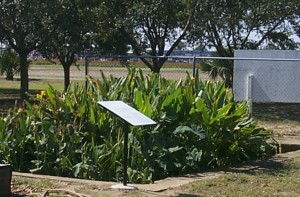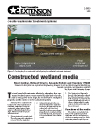A constructed wetland is used to recreate the treatment processes that occur in natural wetlands. Natural wetlands generally have visible water in the system. (NOTE: Natural wetlands are not to be used to treat wastewater. Constructed wetlands are sized and designed specifically to treat wastewater.)
However, for those at homes, the wastewater flows beneath the media surface, which limits contact between residents and wastewater. The constructed wetland is a basin or cell containing microorganisms, media, and plants that provide treatment of incoming effluent. In subsurface flow wetlands, the cell is filled with graded gravel media or other porous material that is resistant to the corrosive and dissolving properties of wastewater.
These cells have an influent distribution device and an effluent collection device. The effluent to be treated flows through the bed contacting the media and attached organisms. It is important to maintain an even cross-sectional flow throughout the wetland to assure proper treatment. The wetland has the possibility of becoming plugged with debris and organic matter, which will prevent even cross-sectional flow.
The wetland cell is generally an earthen basin lined with compacted native clay, bentonite clay, concrete, PVC, hypalon, or ethylene propylene diene terpolymer (EPDM) rubber. The plants used in the wetland must be able to survive in a saturated medium. Both soft tissue and hard tissue plants can be used in the wetland. However, some experts believe that hard tissue plants are better, because they may provide a pathway for oxygen to enter the wetland during the winter months.
Septic tanks are used as the precedent treatment process to constructed wetlands. Once the wastewater leaves the septic tank, it enters the wetland. The pathogens and nutrients entering the wetland are believed to be removed from the effluent by microbes living on the surfaces of the media and plant roots.
Other processes such as filtration, nitrification, denitrification, and adsorption also help in removing the pathogens and nutrients. The plants provide oxygen to the bed and remove a small percentage of the nutrients. The longer the detention time in the wetland, the better the quality of the effluent that exits the wetland.
As the wastewater flows through the media, it exits the wetland through a water level control sump. A water level control device allows the water level to be raised or lowered as needed to prevent overflow and maintain enough effluent for plant growth. Wetlands may be gravity-fed or pressure-dosed.
Constructed wetland systems should be designed and built to blend into the home’s landscaping. The best way to achieve this goal is to determine where the onsite wastewater treatment system will be located before the house is built. Effective planning before building the house simplifies the system and helps you enjoy it.
Related Resources:
 Operation and Maintenance Checklist: Constructed Wetlands
Operation and Maintenance Checklist: Constructed Wetlands
 Constructed Wetlands (and in Spanish)
Constructed Wetlands (and in Spanish)
 Onsite Wastewater Treatment Systems: Constructed Wetlands (VHS video)
Onsite Wastewater Treatment Systems: Constructed Wetlands (VHS video)

